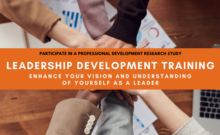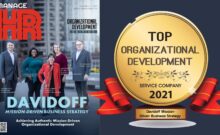In our consulting work, we are frequently brought into organizations to help them move to the next level of their growth. As we interview management, employees, and clients and listen to their perspectives, we build a picture of the organization, and often find there are internal barriers that get in the way of growth. Attitudes of complacency or behaviors such as head-in-the-sand denial (“We’re doing fine the way we are”) become apparent. At the root are gaps in social-emotional intelligence training and the skills to deal with conflicts that naturally come up; a lack of agreement of where the organization is going; or a priority on operations over people. These are all internal problems that have solutions.
In most cases, the problem comes down to culture: assumptions, norms, and behaviors that reflect explicit or unspoken “rules” in the organization. The culture examples above can be categorized as “Mission-Challenged” aspects of an organization – – those that diminish the organization’s success and growth. Left unaddressed, these cultural barriers limit individual and organizational performance, erode employee satisfaction and growth, and indicate a lack of alignment to mission.
So how can you shift your culture? Here are some approaches you can apply in your own organization:
Ask tough questions. As noted earlier, self-awareness and self-confrontation are key. You and your teams need to be willing to ask thoughtful questions about yourselves and begin to address what’s not working. Here are some examples of the kind of questions that we recommend:
- What do we believe we stand for as an organization? Do we live in accordance with that? Where are the gaps and how do we close them?
- What are our stated values? How can we operate in a way that corresponds more closely to these?
- What is our mission? Does every employee know the mission? Is mission front and center in each person’s day-to-day reality?
- Do we have a vision? What is the “so-what” of our work?
- In general, what could we be doing a better job at, as related to policies, practices, and people?
- What is stopping our teams and people from operating at their best and from feeling most satisfied? Have we talked to them to hear their perspectives or engaged third-party consultants to ask? What can we do about it?
Align stated and actual cultures. In one trade association, the mission was all about promoting workplace equality, but the association’s employees themselves were not treated fairly due to favoritism and implicit bias. It’s important to enact your stated values and principles by “operationalizing” how they should be put into practice. For example, don’t just say you value “respect,” provide real guidelines on what that means: upholding the dignity of others, reaching out to colleagues in need, valuing differences, and the like. Again, this has to start at the top — if leaders don’t embody stated values, no one can be expected to.
Cut the drama. This should seem self-evident, but too many organizations implicitly condone dramatic, energy-sapping interactions that take away from the mission. Don’t be one of them. Instead, work to identify/acknowledge drama and understand what is its root cause. Drama doesn’t just come out of nowhere. It’s a pattern and way of being that people resort to when they aren’t aware of what’s really going on with them and lack the tools to meet their needs and be satisfied. Assess if/how drama shows up. Then take steps to move away from drama, using the ideas here and others.
We understand that the idea of shifting your culture is a big job. That means you recognize the challenge ahead as well as the possibilities. You can create a different kind of organization and experience for your people and your clients.
Consider starting with our Mission-Driven Versus Mission-Challenged Assessment, to uncover gaps between your stated (or hoped-for) and actual culture. Taking any step, however large or small, is a win, as it means you’re on the path to a better, more empowering culture – – one that will benefit your organization and the world beyond.





